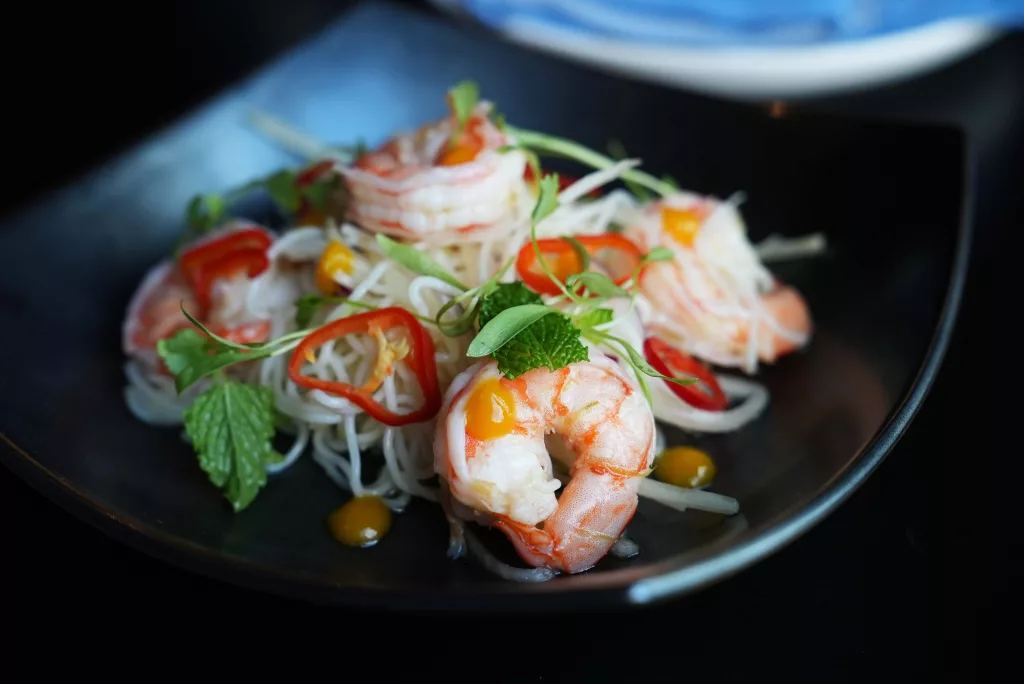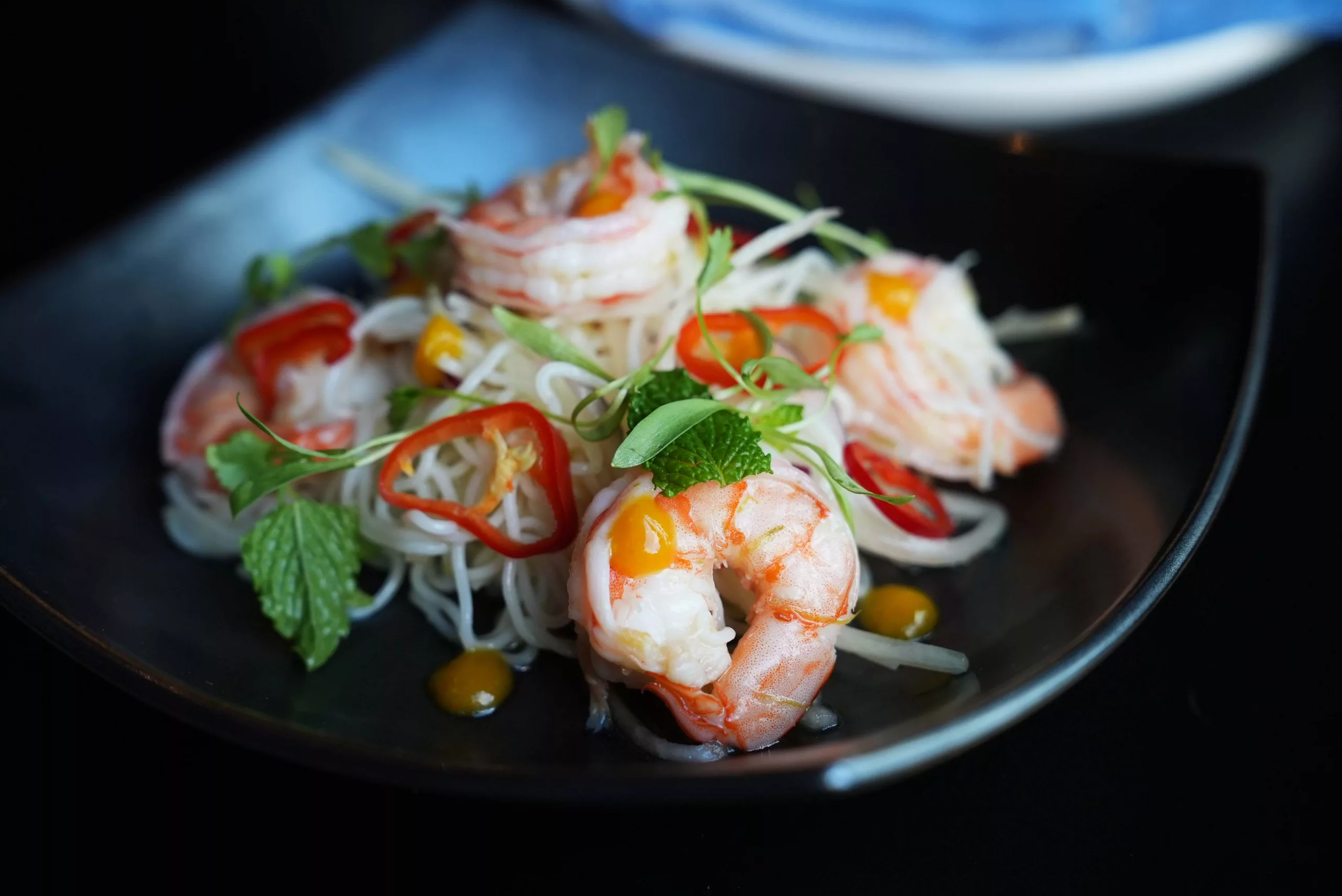
- Keep color and contrast in mind when cooking or staging. Chefs should seek opportunities to use color contrast in dishes, knowing that the more colorful the dish, the better it will look in a photo. As we know, Monotone food is dull and limited. When choosing dishes to take photos of look for contrasting colors on the same plate. Yellows and greens and reds do well. Anything opposite each other on a color wheel will make the photo stand out.
- Shoot near a window during the day. Inside lighting usually casts warm or yellow hues, while natural light tends to disperse cooler colors. It can create a muddled or uneven appearance when poor or mixed lighting is present in a shot. Yellow lighting can make even the freshest food appear from a greasy spoon. The camera won’t know how to adjust for the two colors. To correct this, move the dish to the window and let the natural light illuminate the dish, then shoot from a 90 degree angle to the window not directly at it with the food between you and the light.
- Fill the frame with a Prop. It is important to think holistically about the shot and not just about the focus. Having a lot of empty space around the main subject can be distracting and make it appear like the food is floating in space. Incorporating an out-of-focus prop, like a bottle or beer, can lend a sense of scale and perspective.
- Take a Bunch of shots from Different Angles. The two best angles are the diner’s view, basically how you see the dish while you are eating it, and the direct overhead shot. Dont be afraid to experiment with angles and close-ups though, especially if they highlight a particularly cool looking part of the dish/plating.
